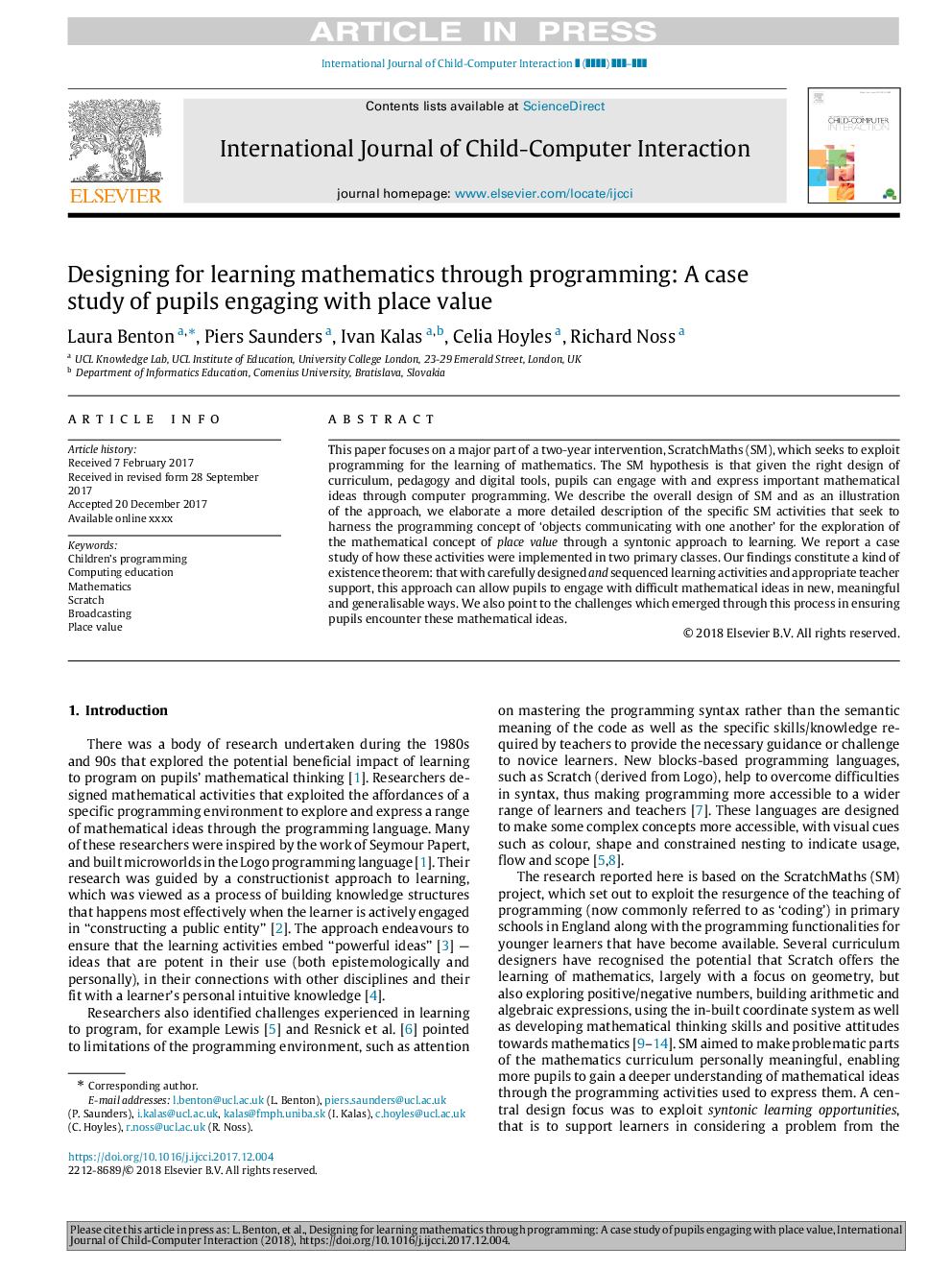| Article ID | Journal | Published Year | Pages | File Type |
|---|---|---|---|---|
| 6795259 | International Journal of Child-Computer Interaction | 2018 | 9 Pages |
Abstract
This paper focuses on a major part of a two-year intervention, ScratchMaths (SM), which seeks to exploit programming for the learning of mathematics. The SM hypothesis is that given the right design of curriculum, pedagogy and digital tools, pupils can engage with and express important mathematical ideas through computer programming. We describe the overall design of SM and as an illustration of the approach, we elaborate a more detailed description of the specific SM activities that seek to harness the programming concept of 'objects communicating with one another' for the exploration of the mathematical concept of place value through a syntonic approach to learning. We report a case study of how these activities were implemented in two primary classes. Our findings constitute a kind of existence theorem: that with carefully designed and sequenced learning activities and appropriate teacher support, this approach can allow pupils to engage with difficult mathematical ideas in new, meaningful and generalisable ways. We also point to the challenges which emerged through this process in ensuring pupils encounter these mathematical ideas.
Keywords
Related Topics
Physical Sciences and Engineering
Computer Science
Human-Computer Interaction
Authors
Laura Benton, Piers Saunders, Ivan Kalas, Celia Hoyles, Richard Noss,
